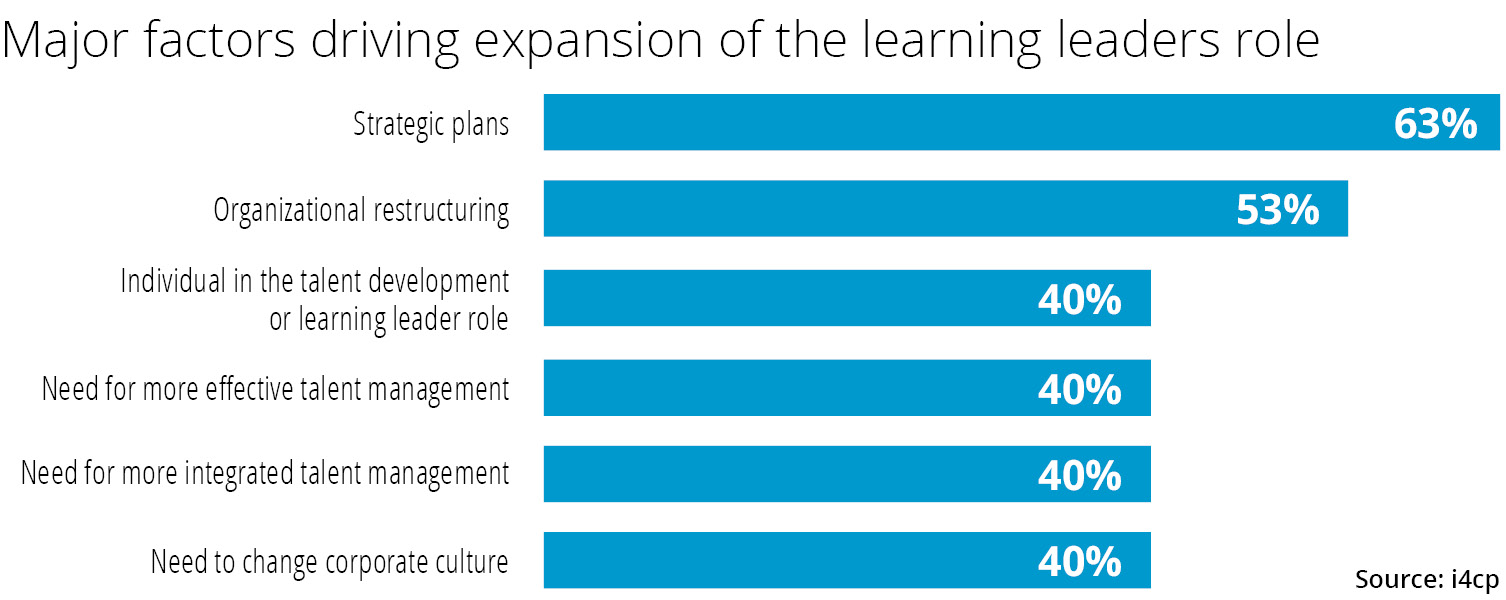The Dangerous Gap in Succession Pipelines

Business leaders’ recent conversations with i4cp confirm that succession is on the minds of many. Hardly surprising, since planning for successors is vital for all key organizational positions, from critical-role individual contributors to top-of-the-house leaders.
But our research found that many organizations have a dangerous gap in the pipeline for a vital C-level position.
In 2017, i4cp partnered with ATD (the Association for Talent Development) to examine the changing role of the Chief Talent Development Officer (Chief Learning Officer or similar titles).
What we discovered was startling: Only 20% of organizations had created a formal succession plan for the learning leader’s position. Even in high-performance companies, the figure was only one in four (though still significantly ahead of lower-performers’ 16 percent).
An increasingly important, and expanding, role
As our study, Chief Talent Development Officers: Driving Strategy and Performance , noted, in a time when an organizational culture of learning lends powerful support for strategic execution and bottom-line business results, the learning and development (L&D) leader’s job is increasingly crucial.
Nearly eight in 10 of the 543 business and learning leaders we surveyed reported the presence of a designated L&D leader in their organizations. While most reported to the CHRO, in some market-leading firms, the position was accountable directly to the CEO. And in 90% of companies overall, we found the learning leader’s job was expanding.
Strategic shifts, organizational restructuring, growing needs for more effective and integrated talent management, and culture-transformation initiatives were pressing forces underlying expansion of the CLO role. The variations in labor markets and changes we’ve all seen in workforce composition are driving the job’s evolution, too.
If organizations are to remain competitive (let alone, be innovative) as the shelf-life of workforce skills rapidly shortens, development must also transition—from the finite, event-based approaches of the past to a continuous stream of compelling, relevant, easily accessed-and-consumed learning content that reaches into every organizational level.
Leadership development is a critical capability
In keeping with that idea, Chief Learning Officers must lead the charge to build workforces of self-directed learners whose skills and knowledge can match the dynamic business environments that employ them.
Learning leaders must also become accomplished developers of themselves, and—especially—of the other business leaders in their organizations. That developer-of-other-leaders mandate is a responsibility linked to better market performance. And underscored by 85% of survey respondents’ citing leadership development as the single most critical skill CLOs must possess.
Creating learning leaders who are accomplished leadership developers and have the other capabilities needed to excel in growing roles is a high-performance practice. Top companies were more likely to focus development efforts on their CLOs, and they reported success in that effort at almost twice the rate of lower-performers.
For CLOs who took on duties beyond L&D, leadership development proved to be the most likely area of expanded responsibility. However, more than six in 10 had ventured into performance management, succession management, and/or organizational culture oversight. Over half were leading change or employee engagement initiatives. In many cases, learning leaders had expanded the scope of their roles so significantly that they headed multiple talent-related functions.
It goes without saying that the wearing of many hats broadens perspectives for CLOs— expanded roles widen a leader’s understanding of enterprise learning needs, enable greater integration of talent programs, help build stronger networks and relationships across business functions, and increase CLOs’ spans of influence.
But on the downside, expanding roles can lead organizations to rely too heavily on the learning leader, causing undue burden and putting the individual at risk for burnout. Taking on too much extra responsibility can dilute effectiveness and efficiency of learning leaders, too. Absent careful planning and preparation, role expansion can mean that L&D—along with any other talent functions under a single leader’s purview—may suffer.
The need for successors cannot be ignored
With 90% of talent development leaders reporting that their jobs are expanding, the need for a pipeline of prepared successors cannot be ignored. Loss of a learning leader may be felt across multiple business functions, causing potentially crippling disruptions in continuity, alignment, and business performance.
And continued broadening of CLOs’ responsibilities heightens the risk potential for the 80% of companies without succession plans in place. Fortunately, it’s a danger that immediate action can remedy—make the learning leadership pipeline a priority.
When it comes to the CLO, there’s an additional aspect of succession that shouldn’t be ignored. Our research also looked at learning leaders as succession candidates. Did CLOs see their current positions as steppingstones to new and greater executive challenges? Were their eyes on other roles?
Yes, was the answer, according to two-thirds of survey participants. The top aspiration among CLOs (75%) is the CHRO role. Just over a third cited the Chief Diversity Officer position, and about the same percentage noted other C-level roles without naming specifics. Only about one in four said CLOs aimed to become CEOs.
Whether you look at succession in terms of the pathway to learning leadership or the road beyond it to the top of the organization, preparation is crucial. Any company without a formal succession plan for the CLO role is gambling on its future.
i4cp’s research found strong links to better market performance and greater organizational learning effectiveness in companies that acted to develop and advance internal talent into the learning leadership pipeline.
Doesn’t it also make sense to capitalize on the business and organizational savvy that current CLOs apply and refine every day?
Designing development opportunities that prepare learning leaders for advancement into other senior-leadership positions may secure the very perspective and expertise your organization needs to continue its upward trajectory in a time that relentlessly demands new abilities of us all.
Carol Morrison is a Senior Research Analyst at i4cp






